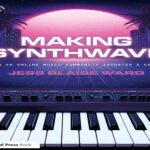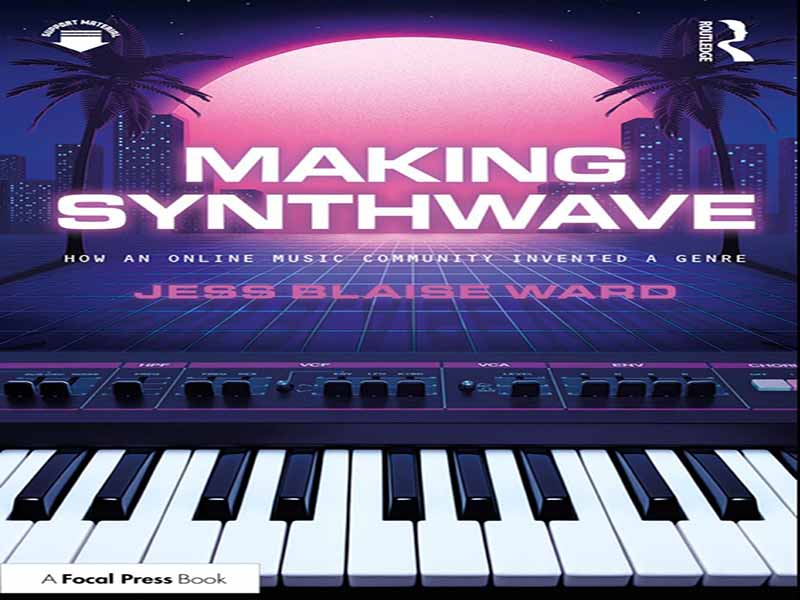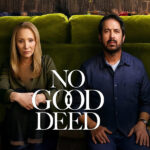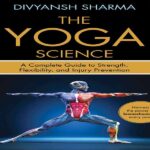- عنوان کتاب: Making Synthwave -How an Online Music Community Invented a Genre
- نویسنده: Jess Blaise Ward
- حوزه: موسیقی
- سال انتشار: 2025
- تعداد صفحه: 415
- زبان اصلی: انگلیسی
- نوع فایل: pdf
- حجم فایل: 11.6 مگابایت
«برای زندگیت پرواز کن»، قطعه نهم از آلبوم همنام GUNSHIP (۲۰۱۵)، آغاز سفر من با synthwave بود. من مجذوب سینتیسایزرهای درخشان در مقدمه، ریورب رعدآسا روی اسنیر و هارمونیهای آوازی در گروه کر شدم. از بین تمام موسیقیهایی که تا به حال شنیده بودم، این آهنگ بیشترین شباهت را به خانه داشت. حالا که به گذشته نگاه میکنم، بین سینتیسایزرها و هارمونیهای آوازی انباشته، واقعاً برش صوتی بینظیری از صداهای دوران کودکیام بود؛ با مادرم که یک دختر واقعی دهه هشتادی و خواننده بود و پدرم که شیفته سینتیسایزر. من اولین بار آلبوم GUNSHIP را در سال ۲۰۱۷ شنیدم، زمانی که در مقطع کارشناسی ارشد موسیقی و فرهنگ عامه تحصیل میکردم و به طور خاص به نظریه خرده فرهنگها و شکلگیری ژانر علاقهمند بودم. من همچنین چند واحد اختیاری در زمینه ترانهسرایی و تهیهکنندگی گذرانده بودم که ادامه کار من در مقطع کارشناسی ارشد تولید موسیقی بود. در آن زمان، من با چیستی، چرایی، چگونگی و هویت گروههای موسیقی مانند زیرژانرها، خردهفرهنگها، صحنهها و جوامع دست و پنجه نرم میکردم. وقتی سرانجام موسیقی سینثویو را به صورت آنلاین کشف کردم، همزمان با آن با یک جامعه کامل از شنوندگان دیگر نیز آشنا شدم. در توییتر/ایکس، آنها خود را با هشتگهای #synthwave و #synthfam معرفی میکردند و بسیاری از آنها خود خالق موسیقی بودند. به عنوان یک موسیقیدان، ترانهسرا و تهیهکننده، مشتاق بودم که درباره فرآیندها و شیوههای خلاقانه ساخت سینثویو بیشتر بدانم. کاربران آنلاین ردیت، سینثویو را به عنوان یک سبک موسیقی «بازگشت به دهه ۸۰» یا «نوستالژی دهه ۸۰» توصیف میکردند و بحثها یا «موضوعاتی» که میخواندم، برتری زیباییشناسی دهه ۱۹۸۰ را آشکار میکرد. من به این فکر میکردم که چه نوع فرآیندها و شیوههای خلاقانهای برای دستیابی (یا بازآفرینی) صداهای این دهه در حال انجام است. بسیاری از موسیقیهای محبوب دهه ۱۹۸۰ با استفاده از سینتیسایزرهای سختافزاری ساخته شدهاند، مانند موسیقی سینثپاپ از هیومن لیگ یا دپش مد. از سابردیتهای سینثویو، مشخص شد که اکثر سازندگان سینثویو نه تنها از این سینتیسایزرها استفاده میکردند (اگر اصلاً استفاده میکردند، به دلیل هزینه، تدارکات و در دسترس بودن) بلکه از امکانات فناوری موسیقی دیجیتال قرن بیست و یکم – مانند سینتیسایزرهای مجازی و شبیهسازهای افزونه سینتیسایزرهای قدیمی – نیز بهره میبردند. میخواستم درباره این جامعه بیشتر بدانم، زیرا مشخص بود که این کاربران اینترنت در حال مدیریت یا مذاکره در مورد چیزی بودند که به نظر میرسید سرمایه اجتماعی و خردهفرهنگی سینثویو باشد. آنها نه تنها دائماً در حال ایجاد مرزهایی برای چیزی بودند که فقط میتوان آن را به عنوان یک ژانر موسیقی توصیف کرد، بلکه به عنوان یک جامعه موسیقی آنلاین، هویت گروهی روشنی داشتند. چیزی که به ویژه جذاب بود، حس تعلق آنها به جامعه بود که به نظر میرسید فراتر از امتیاز دهه ۱۹۸۰ و سینتیسایزرها است.
‘Fly for your life’, track nine of GUNSHIP’s eponymous album (2015), was the beginning of my journey with synthwave. I was captured by the bright synths in the introduction, the thunderous reverb on the snare and the vocal harmonies in the chorus. Of all of the music I had ever heard, this sounded the most like home. Looking back now, between the synths and the stacked vocal harmonies, it really was the perfect sonic cross-section of the sounds of my childhood; with my real ’80s girl and singer Mum, and synthesizerobsessed Dad. I first heard GUNSHIP’s album in 2017, when I was studying for an MA in Popular Music and Culture, being particularly interested in subcultural theory and genre formation. I had also taken some electives in songwriting and production, as a continuation of the work from my BA in Music Production. At the time, I was grappling with the what, the why, the how and the who of musical groupings e.g. subgenres, subcultures, scenes and communities. When I eventually discovered synthwave music online, I simultaneously found an entire community of other listeners. On Twitter/X, they identified themselves with #synthwave and #synthfam, and many were music creators themselves. As a musician, songwriter and producer, I was intrigued to know more about the creative processes and practices of making synthwave. Online, Reddit users characterised synthwave as an ‘80s throwback’ or ‘80s nostalgia’ style of music, and discussions or ‘threads’ that I read made clear a privileging of 1980s aesthetics. I pondered what sort of creative processes and practices were being undertaken to achieve (or reimagine) the sounds of this decade. Lots of popular music from the 1980s was created with hardware synthesizers, such as the synthpop music by Human League or Depeche Mode. From synthwave subreddits, it became apparent that most creators of synthwave weren’t only using those (if at all, due to cost, logistics and availability) but were exploiting affordances of 21st century digital music technology – such as virtual synthesizers and plug-in emulators of legacy synths. I wanted to know more about the community, as it was apparent that these internet users were managing or negotiating what appeared to be the social and subcultural capital of synthwave. Not only were they continually establishing boundaries of what could only be described as a musical genre, but they had a clear group identity as an online music community. What was particularly fascinating was their sense of community, which seemed to go well beyond their privileging of the 1980s decade and synthesizers.
این کتاب را میتوانید از لینک زیر بصورت رایگان دانلود کنید:
Download: Making Synthwave




































نظرات کاربران